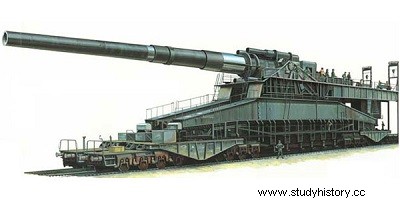
The defeat at Kerch obviously led to a serious aggravation of the situation of the defenders of Sevastopol, that is, the coastal army of General Petrov. At the beginning of June, this unit comprised seven infantry divisions, four brigades, two marine regiments, two tank battalions and an armored train — a total of over 106,000 men, with 600 guns and over 100 mortars. , but only 38 tanks. The air forces, based on airfields near Sevastopol, had only 55 usable aircraft.
Once the Kerch operation was completed, the German high command concentrated most of the XI' army some ten infantry divisions in the Sevastopol area, with the mission of capturing the city as quickly as possible. Many artillery pieces lined up for the assault. As the former commander of the Eleventh Army, General von Manstein, reported, the 54th Army Corps, charged with delivering the decisive blow, was supported by 120 batteries—56 of which were heavy and super-guns. heavy (calibers ranged from 190 to 420 mm). The Germans had an equal disposition. ment of a battery of 615 super-heavy mortars and the giant 800 "Dora" gun on the railway. By the time the offensive began, they were also fielding a large number of tanks and planes. The whole of the German forces led by Manstein, one of the best German generals, consisted of 204,000 men, 670 guns from 76 to 420, 655 anti-tank guns, 720 mortars, 450 tanks and 600 planes.
For the naval blockade of Sevastopol the enemy sent to various Crimean ports (AkMechet, Evpatoriya and Yalta) nineteen torpedo boats, thirty patrol boats, eight submarine hunters, and gathered 150 bombers specially trained to attack the boats. The torpedo boats were mostly moored at Yalta and could operate against the main lines of communication that linked the outside world to the entrenched camp at Sevastopol. The German device made it very difficult to supply the city garrison and forced the use of a large part of the fast ships of the Black Sea Fleet, as well as a regiment of transport aircraft from the North Caucasus front. Submarines were even used to transport ammunition, fuel and food to Sevastopol.
On June 2, Manstein launched an aerial bombardment coupled with artillery fire which continued for five days; then, on the morning of June 7, he launched his infantry to the attack. The main thrust was directed against the Kamyshly-Belbek sector, in the direction of the eastern end of the Northern Bay, while the secondary thrust was exerted along the Yalta highway. The Germans hoped that these two converging actions would succeed in splitting the Soviet forces, encircling them and then destroying them piece by piece.
A furious fight broke out. The Luftwaffe carried out 600 to 1,000 sorties daily, while German artillery continuously bombarded Soviet positions. On the first day of the offensive, the Wehrmacht managed to break through the Soviet defenses slightly, but only at one point. Over the next few days the Germans continued to attack relentlessly, despite heavy casualties, but Soviet infantry, marines, gunners and mortar crews clung to their blocking positions. Manstein had to admit later, in his Memoirs, that despite the progress made at the cost of very heavy losses, the fate of the offensive seemed, in mid-June, hanging by a thread. The offensive power of the German forces was noticeably blunted, while the Soviet troops still showed no
signs of weakening. The German high command found itself obliged to reinforce the elements besieging Sevastopol with the 45th infantry division coming from the Kerch peninsula and, during the second half of June, it began to transfer certain units belonging to various formations of the XVII Army, which was then operating in the Donbass.
